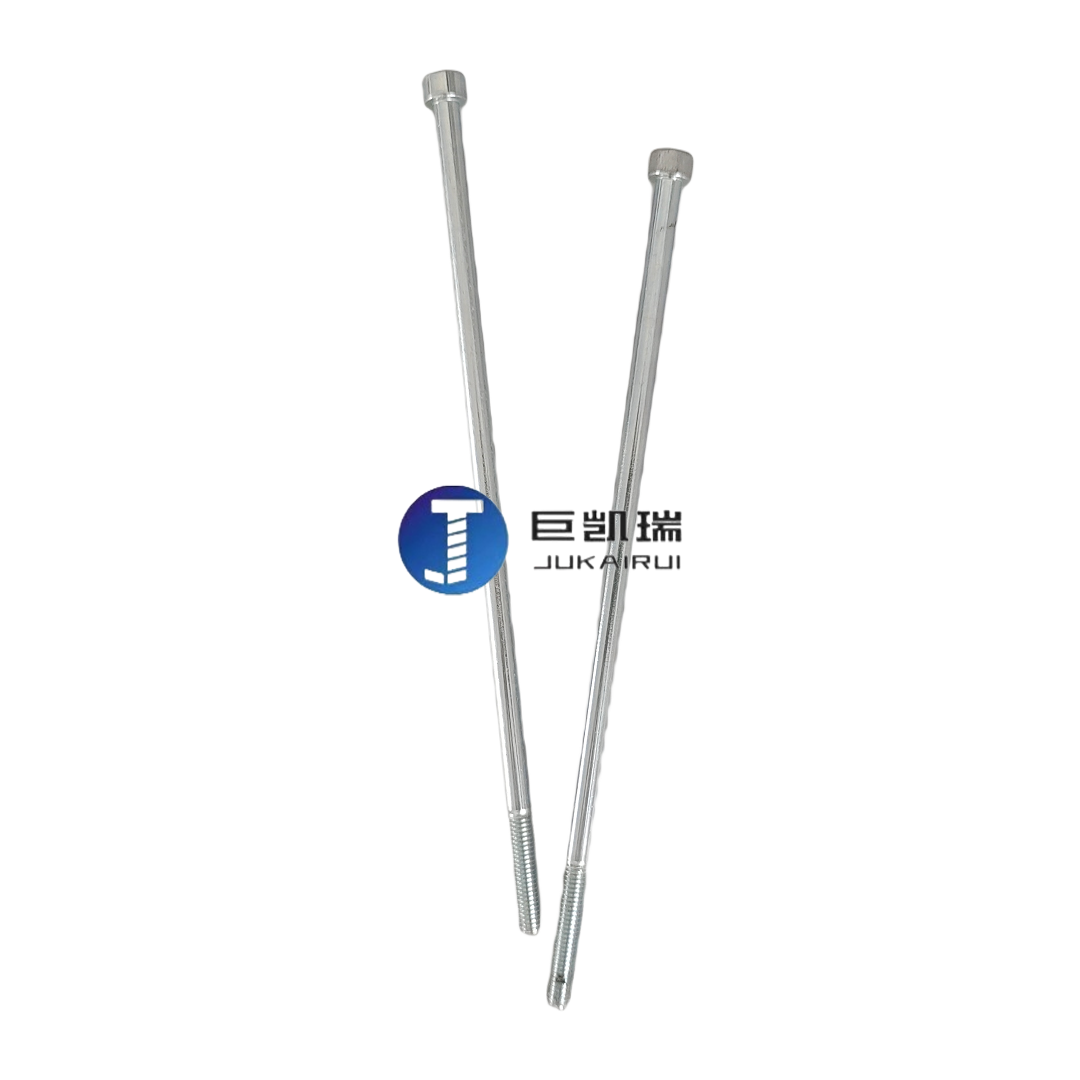Release time:2020-01-16 18:44 Browse:

When discussing how to judge the fatigue limit of extended hex screws, we first need to understand the importance of the concept of fatigue limit in mechanical engineering and materials science. Fatigue limit, also known as the endurance limit, refers to the maximum stress value of the material under the action of infinite multiple alternating stresses without damage. For fasteners such as extended hex screws that are subjected to complex stresses and cyclic loads, an accurate assessment of their fatigue limits is essential to ensure equipment safety and extend service life.
1. Understand the basic characteristics of lengthened hex screws
Elongated hex socket screws, as a common connector, are usually designed to take into account the needs of strength, stiffness, corrosion resistance and maintainability. Its special feature is the "extended" design, which means that it may need to transmit or withstand greater forces over longer distances, so the evaluation of its fatigue performance is particularly important.
2. Influencing factors of fatigue limit
1. ** Material characteristics ** : hex screws of different materials have different anti-fatigue properties. For example, high-strength alloy steels generally have higher fatigue strength than ordinary carbon steels.
2. ** Geometric shape and size ** : the diameter, pitch, tooth Angle and the extended part of the screw will have an impact on its fatigue performance. Reasonable geometric design can disperse stress concentration and increase fatigue life.
3. ** Surface quality ** : surface roughness, oxide layer, cracks and other defects will significantly reduce the fatigue strength of the material. Therefore, a good surface treatment process is the key to improve fatigue performance.
4. ** Working environment ** : temperature, humidity, corrosive media and other environmental factors will also affect the fatigue life of screws. Under extreme conditions, the properties of the material may be significantly reduced.
5. ** Load characteristics ** : including load type (such as tensile, shear, torsion), amplitude, frequency and loading mode, etc., are important factors affecting the fatigue limit.
Third, the method of judging the fatigue limit
1. ** Theoretical calculation ** :
- **S-N curve method ** : The fatigue life (N) of the material under different stress levels is obtained through laboratory testing, and the relationship curve between stress (S) and life (N) is drawn, and then the fatigue limit is estimated. For extended hex screws, the influence of their special shape and size on the S-N curve should be adjusted.
- ** Fracture mechanics method ** : Using fracture mechanics theory, analyze the law of crack propagation in materials and predict the occurrence of fatigue fracture. This method is especially suitable for cases where there are initial defects or cracks.
2. ** Experimental Test ** :
- ** Rotary bending fatigue test ** : Install the screw on a special fatigue test machine, apply alternating bending stress, observe and record the number of cycles before breaking, so as to determine the fatigue limit.
- ** Axial tensile and compressive fatigue test ** : Simulate the axial tensile and compressive load of screws in actual work, and carry out fatigue test. This test method is closer to the actual condition, but the equipment is complicated and the cost is high.
3. ** Numerical Simulation ** :
- Use finite element analysis (FEA) software to build a three-dimensional model of lengthened hexagonal screws, apply simulated loads and boundary conditions, and predict fatigue life. This method can quickly and economically evaluate the fatigue performance of different design schemes.
4. Precautions in practical application
1. ** Reasonable selection of materials ** : According to the requirements of specific working conditions, select materials with appropriate fatigue strength.
2. ** Optimized design ** : Improve the fatigue performance by changing the geometry and size of the screws or using advanced manufacturing processes.
3. ** Strict quality control ** : Ensure that the surface quality and dimensional accuracy of screws in the production process meet the design requirements, and reduce the fatigue damage caused by manufacturing defects.
4. ** Regular inspection and maintenance ** : In the process of use, regular inspection of the screws, timely detection and treatment of cracks, corrosion and other potential problems, to prevent the occurrence of fatigue fracture.
5. ** Environmental adaptability assessment ** : Consider the impact of the working environment on the fatigue performance of the screws, and take the necessary protective measures, such as coating the anti-rust layer and installing the waterproof cover.
To sum up, judging the fatigue limit of extended hex screws is a complex and meticulous process, which requires comprehensive consideration of multiple factors such as material characteristics, geometry, surface quality, working environment and load characteristics. Through the combination of theoretical calculation, experimental test and numerical simulation, the fatigue performance can be evaluated more accurately, which provides a reliable basis for engineering design and practical application.
# Lengthening long hex socket screws # lengthening hex socket screws # Lengthening hex socket screws # long hex socket screws # hex socket screws

